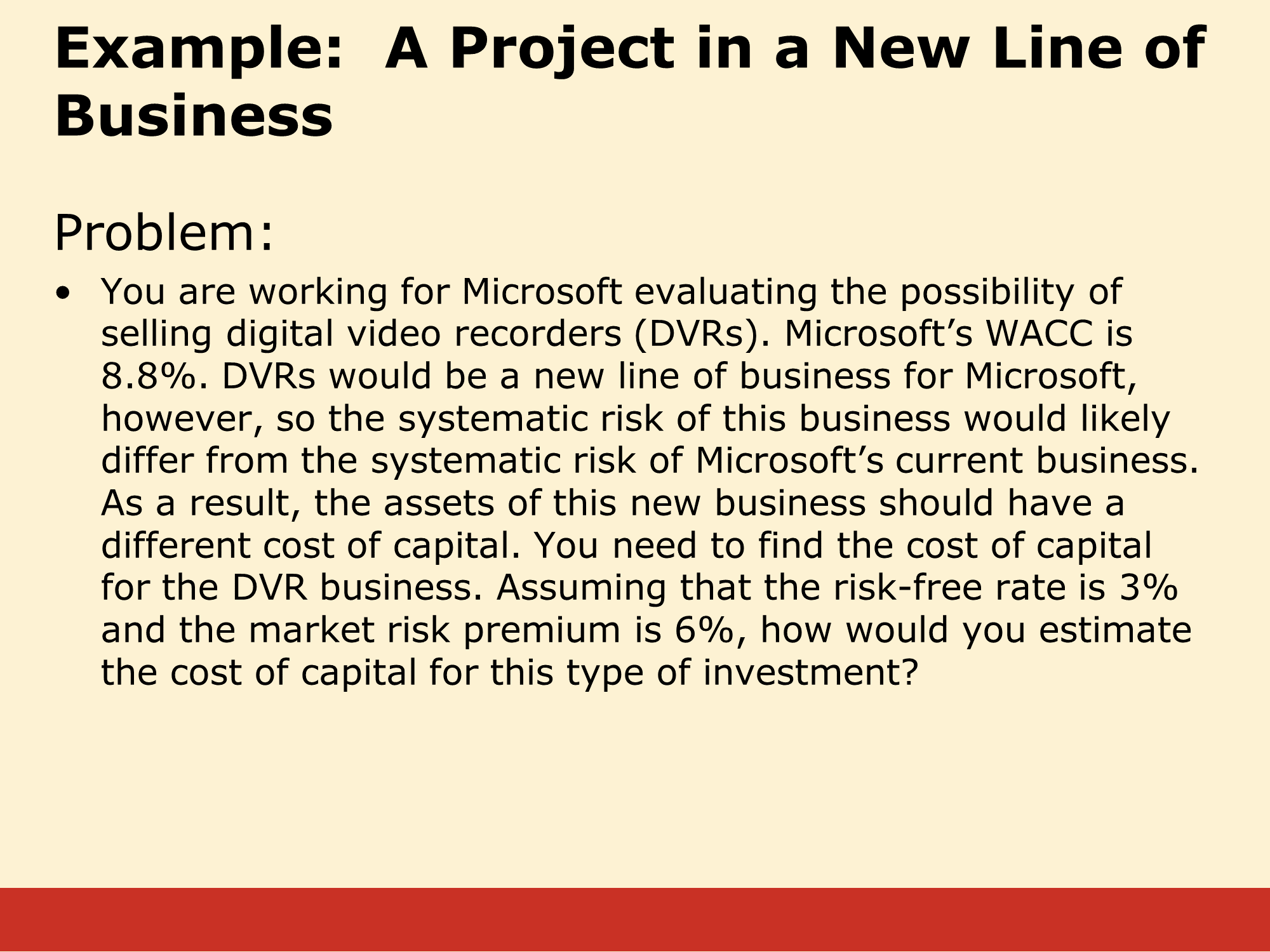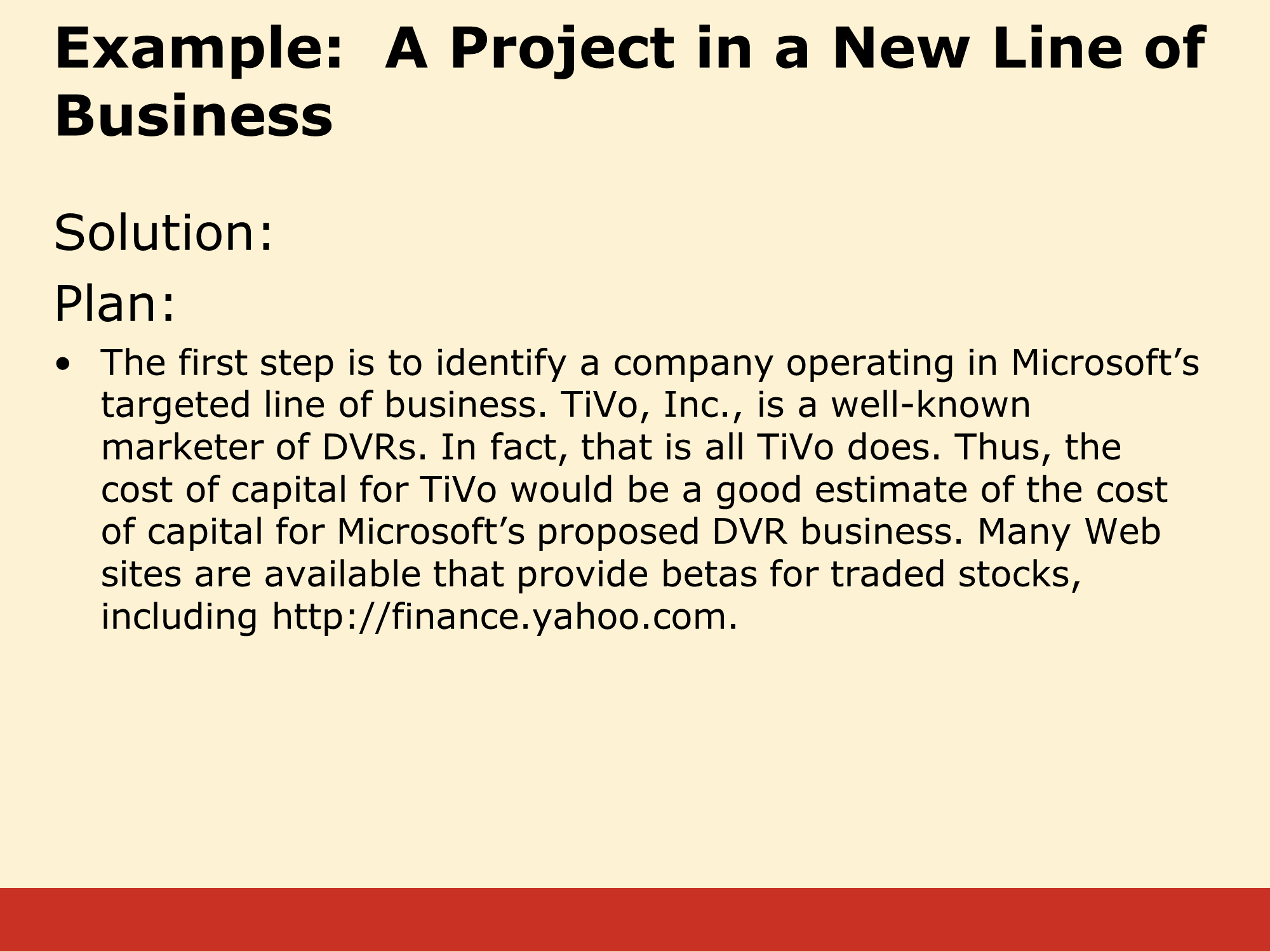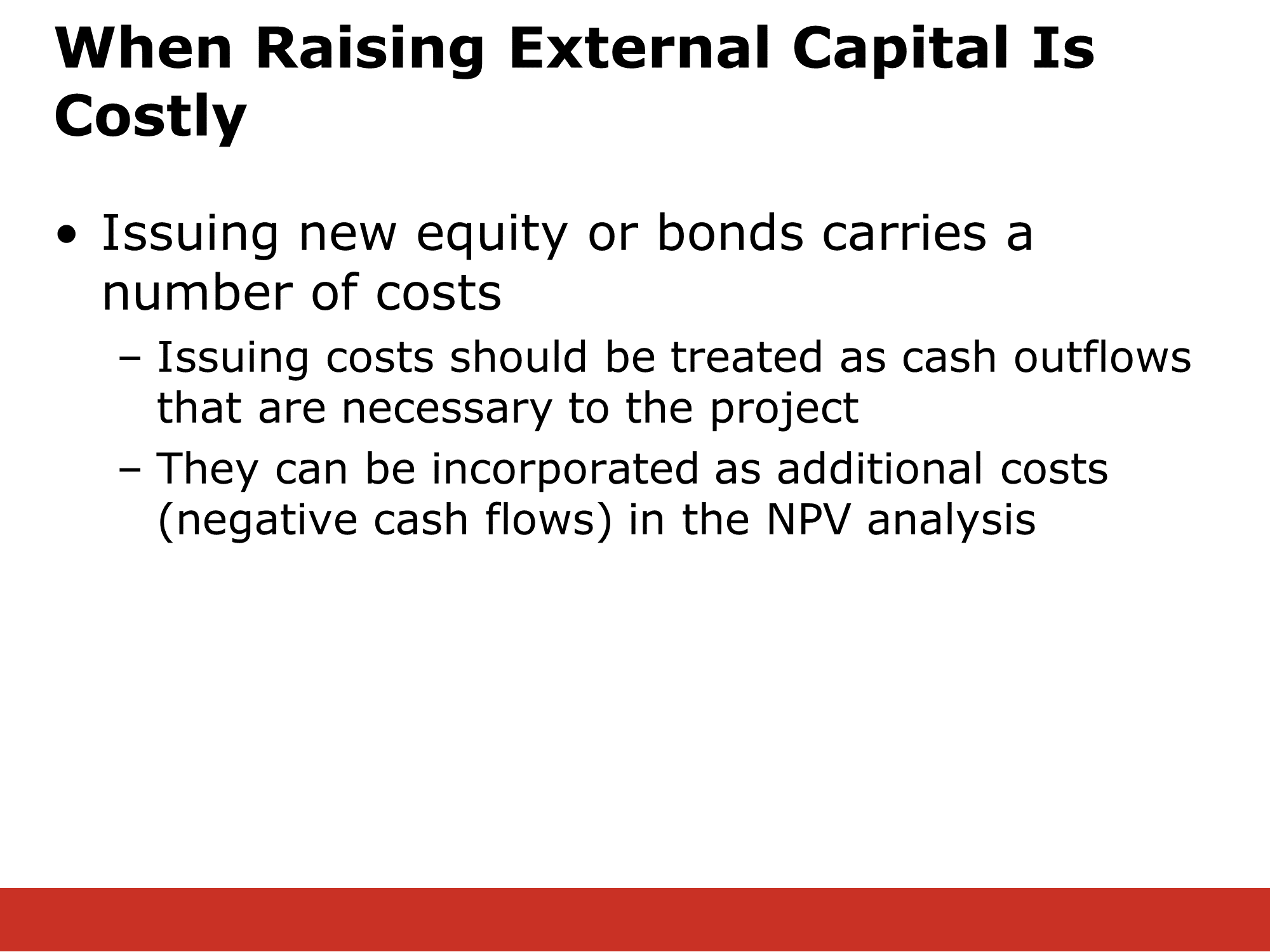🔎 General Advice
When calculating the weights, you want to use market values, not book values if possible. In general, there is more information in market values than in book values because value investors are trying so hard to find the “right price” for any security.
If you are given both market value and face value, use the one that you think is “better” (based on what you’ve learned in the course) and ignore the other one. It may be a red herring.
❔How do you find the cost of equity for a specific project?
✔ You may sometimes be able to calculate multiple WACCs for a given project. WACCs differ between projects based on the riskiness of the project, so always use the WACC that matches the riskiness of the project you are taking the NPV of. Similarly, suppose you work for a private company, where it is harder to calculate the WACC because the stock is not traded on public exchanges. In that case, you can calculate the WACC of a public company in the same industry, assuming that your projects have risk that is comparable to your own. (see below for an example)
If you want to know how to turn the riskiness of a specific line of business into a that you can use as a discount rate, calculate the WACC of a firm in that line of business.
There are deep connections between WACC and the Modigliani and Miller results, so one question on this problem set is designed to help you “think M&M.” Let’s talk about that to help you interpret that problem…

Market risk premium:

Issuing costs are just cash outflows. If you pay an investment banker to issue and place securities, that is an expense just like any other expense. Subtract them from your calculation:
